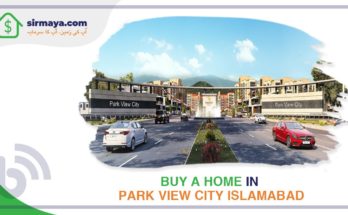A mind equipped with the basic knowledge of interior design can add perfection to any kind of space. Have you ever felt the murmuring of a space you see? Yes, spaces apeak! And only those can hear them, who have a knowledge about their design. You can also talk to your spaces if you accoutre yourself with the basic principles of interior design. Let it be your bedroom, living room or your garden- They all respond differently to what you feed them. Let’s start by learning the fundamentals of interior designing and pave the way towards creating a beautiful home.
Balance
Some spaces you would have visited, that give you a sense of being just right and perfect. The cohesiveness and balance attracts your eyes and you stay stunned. This is what the principle of balancing does in the interior designing domain.
The human eye loves brightness, symmetrical patterns etc. But, simultaneously if a fine play of textures, dim and bright colors, and asymmetrical patterns are displayed, the overall result can be a magnificent masterpiece. The game is all about playing with the weight of objects in a space.
The kinds of balance interior designers consider are these:
- Symmetrical or formal
Formal balance defines symmetry in the placement of objects spread in space. It is a display of a mirror image of objects. The overall place looks like as if the space has been evenly split into two parts. It is a traditional way of designing. The examples include the side tables on each side of a double bed. The design elements of one side are copied on the other side to maintain symmetry. It is an easy way to perform designing as you just have to design one side and copy it to the other one. As simple as it sounds, but a keen eye is required to prevent monotony in design.
- Asymmetrical or Informal
Now this one is complex and exciting. Working with informal and asymmetrical objects in a space is an expert-move in itself. No duplication comes in. Every piece and design is unique and has its respective significance. The hues, forms, textures, lines- All are playing informally for defining the voice of your space. An example of this asymmetrical balancing design is when you balance a sofa-piece with two chairs on each side.
- Radial balance
From the objects in a space that seem to be coming from a specified focal point, we call it radial balancing. A typical example of this is a round coffee table and chairs arranged around it. The form is repetitive, and so are the colors, patterns, and textures.
Rhythm
The same shapes or similar designs, when used after defined intervals, create a rhythm in a space. This is exactly how a melody is created by musicians. The ears feel it, enjoy it, as they are attracted by the welcoming rhythmic patterns of a piano. Int he same way, you can echo rhythm throughout your spaces to attract the human eye. The ideas to make your place rhyme are limitless. You can use repetitive colors in sofa-cushions, or add frames over the balcony, or play with rugs to achieve what you desire. A sense of excitement is created and through such smart play, you can take the game of interior designing to the next levels.
Harmony
As the name suggests, a sense of unity and oneness is created in a space when focusing on this particular principle of interior design. Harmonizing a space demands focus on what core feature you want in your space. It could be a particular color, a message, a theme, a shape, a pattern or anything your mind or hear suggests. The beauty of interior design is that you have a limitless field to play in.
Emphasis
In your spaces, some specialties need to exist. Not everything should be among the ‘essentials’. Otherwise, your space attracts boredom and monotony. This is what you will never want to happen. Therefore, you have to have an anchorage. It may be a beautiful window or a fireplace. These need to be catered with added furnishings, decorations or other simple add-ons to give a mesmerizing look to the room. You can do the emphasis thing by adding furniture around a fireplace or you can make for groupings of furniture to add definition to the built-in points.
Proportion and Scale
This is the most technical and interesting principle of interior design. Not only is this factor limited to the interior design field, but expands to other fields like architecture too. It is based on a common principle of proportions. In most simple words, it tells you that you can’t insert a big object in a small space. Like you may want to place a bed in a room which is too small to have anything else then, it’s not a wise idea. You therefore need to have proportion and scale in your mind when choosing objects for your space. The ratio of one part of the space to the other is called proportion and the ratio of object to the room space is called scale. The Greek rule of thumb in this case explains things more eloquently. The formula is:
The ratio of the smaller section to the larger section should be the same as that of the larger section to the whole.
What an easy way to understand a complex concept! Use these principles of interior design to sparkle up your homes. Stay in touch with Sirmaya.com for more interesting updates on interior design ideas for your new home.





